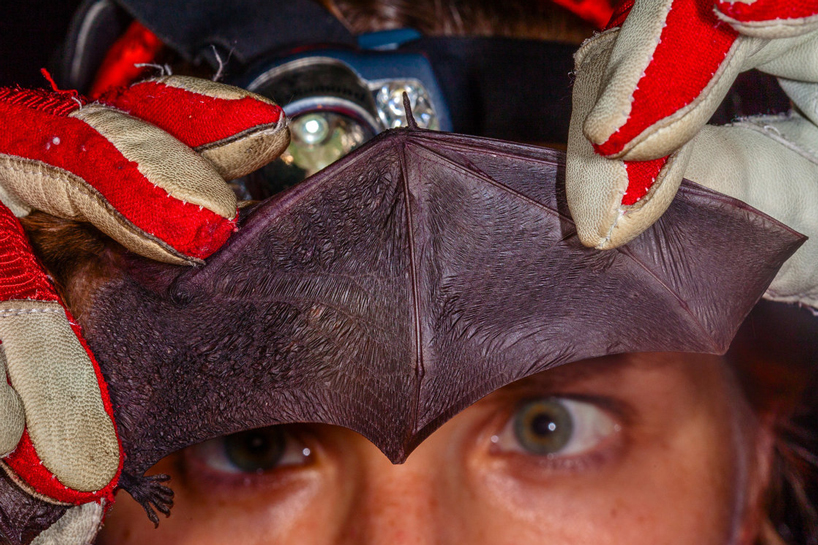
UMSL student Vona Kuczynska checks the wing of a big brown bat during field research conducted at Bellefontaine Cemetery. (Photo by Xin Zhong, who is pursuing a master’s degree in biology at UMSL)
Bat hunting in a cemetery after dark sounds like a plot ripped from a horror movie. But it was all part of a recent scientific excursion involving a group from the University of Missouri–St. Louis.
Cemeteries have a long history as sites preserving native biodiversity and providing refuge for all sorts of wildlife.
On a recent evening, Robert Marquis, professor of biology and director of the Whitney R. Harris World Ecology Center at UMSL, led a group that included students, volunteers and wildlife specialists to Bellefontaine Cemetery, located less than two miles from the university. The group was there to look at moths and bats.
Vona Kuczynska, who is pursuing a master’s degree in biology at UMSL, focused on bats.
“Bats absolutely have personalities,” Kuczynska said in a story that aired on NPR’s All Things Considered.
Some species are really gentle, she said, and don’t seem to mind being handled. “Whereas other bats — usually the bigger bats — are way more aggressive, and they’ll try to bite you, and escape, and do all these things,” Kuczynska said.
Bats are important because they control insect pests. The group at the cemetery set up big nets to catch bats and also used a special bat detector called an AnaBat device. All this nighttime activity is part of a larger effort to get an idea of the range of wildlife in the cemetery.
To learn more about the bat study and UMSL’s involvement click here to listen to the entire NPR story.
The Harris Center, as part of a developing partnership with Bellefontaine Cemetery to inventory Bellefontaine’s native biodiversity, sponsored the evening of bat and moth sampling in the cemetery.
Media Coverage:
Voice of America















